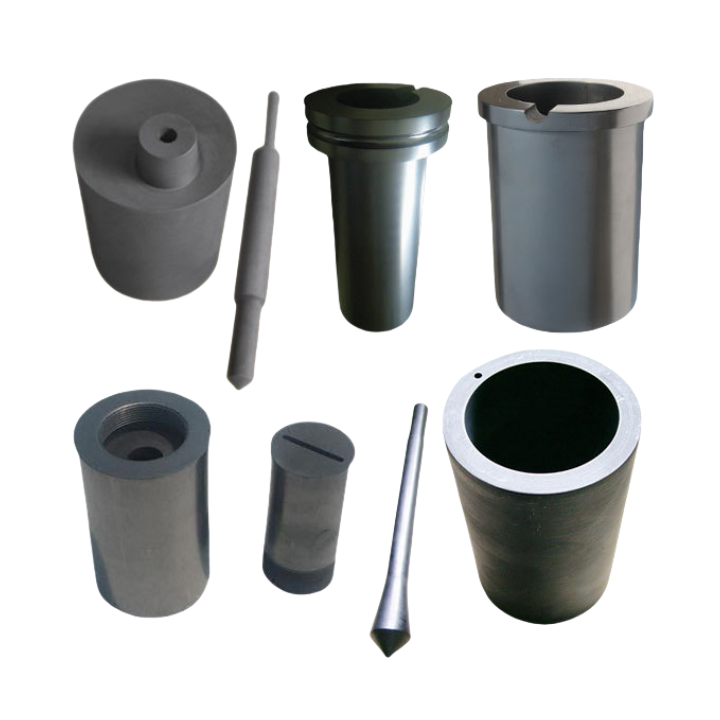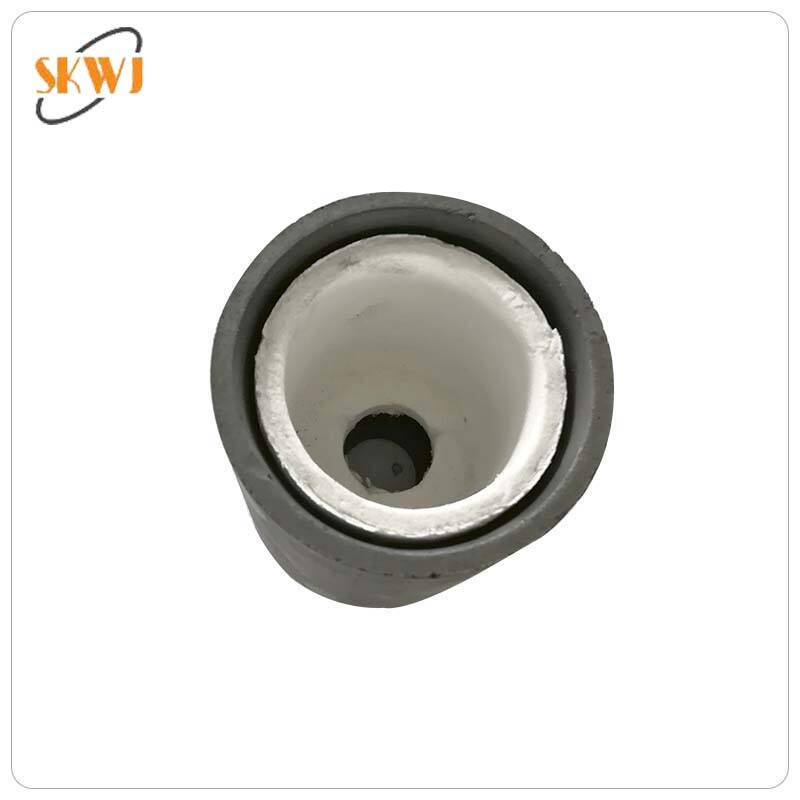Exploring the Versatility of Graphite in Industrial Lubrication and Sealing
Graphite has long been recognized as one of the most versatile materials in industrial applications, particularly in the fields of lubrication and sealing. Its unique molecular structure—composed of layers of carbon atoms arranged in a hexagonal lattice—makes it both slippery and resilient, ideal traits for reducing friction and maintaining reliable seals in demanding environments. Across industries such as automotive, aerospace, petrochemicals, and power generation, graphite plays a vital role in keeping machinery running smoothly and extending the lifespan of critical components. This article explores how graphite contributes to advanced lubrication systems and durable sealing solutions, offering insight into why it continues to be a material of choice in modern engineering.
Why Graphite Excels as a Lubricant
Intrinsic Lubricity from Its Layered Structure
Graphite's exceptional lubricating properties stem from its layered crystalline structure, where individual carbon sheets—called graphene layers—can slide over one another with minimal resistance. This unique behavior reduces surface friction dramatically, making graphite a highly effective solid lubricant. Unlike oils or greases that may degrade under high temperatures or pressures, graphite retains its structure and effectiveness, even under extreme conditions. As a result, it is frequently used in dry or high-temperature applications where traditional lubricants fail. This performance consistency under duress makes graphite a valuable component in bearings, bushings, and valve systems.
High Thermal Stability for Extreme Environments
Another critical advantage of graphite in lubrication is its ability to withstand intense heat without decomposing or losing functionality. Graphite lubricants can operate effectively at temperatures well above 400°C and even up to 3000°C in inert atmospheres. This thermal resilience makes graphite indispensable in furnaces, turbines, and metalworking applications, where components face sustained thermal stress. In such conditions, oils and synthetic lubricants may evaporate or oxidize, leading to failure. Graphite’s stability ensures continued performance and protection, reducing maintenance intervals and increasing equipment uptime.

Graphite-Based Lubricant Applications Across Industries
Use in Automotive and Aerospace Systems
In the automotive and aerospace sectors, where weight, performance, and reliability are paramount, graphite lubricants are used in a variety of moving components. These include piston rings, cylinder liners, and gear assemblies that demand continuous, efficient motion. Graphite is especially beneficial in components exposed to high heat, such as exhaust systems or turbine engines. Its presence reduces wear and tear, enhances energy efficiency, and ensures long-term operation with minimal degradation. In some cases, graphite is used as an additive in motor oils or coatings to improve frictional behavior at high speeds or temperatures.
Essential Role in Metal Forging and Die Casting
Metal forging, die casting, and other high-temperature manufacturing processes rely heavily on graphite as a mold lubricant and parting agent. In these operations, molten metals must flow smoothly into molds without sticking or degrading the tooling. Graphite prevents metal adhesion while protecting die surfaces from thermal shock and erosion. Because it does not chemically react with most molten metals, graphite also preserves product integrity and dimensional accuracy. Its use results in cleaner mold release, longer tool life, and smoother surface finishes, ultimately enhancing manufacturing efficiency and reducing waste.
The Importance of Graphite in Industrial Sealing
Exceptional Seal Integrity Under Pressure
Graphite is widely used in industrial seals and gaskets due to its ability to maintain tight, reliable seals under high pressure and fluctuating temperatures. When compressed, graphite sheets conform to surface irregularities, creating an effective barrier against gas or fluid leaks. Its resilience under pressure cycles and mechanical vibration makes graphite ideal for applications in chemical processing, oil refining, and steam generation. Graphite gaskets provide long-lasting performance, minimizing downtime and reducing the risk of hazardous leaks in mission-critical systems.
Resistance to Chemicals and Corrosive Media
One of graphite's strongest attributes in sealing applications is its resistance to chemical attack. Whether exposed to acids, bases, solvents, or high-temperature steam, graphite maintains its structural and chemical integrity. This makes it an excellent choice for sealing systems in harsh or corrosive environments, including reactors, pipelines, and boiler systems. Unlike metal gaskets, which may corrode over time, graphite seals remain reliable even after extended exposure. Additionally, graphite’s flexibility ensures a snug fit in flanged or irregular surfaces, enhancing sealing efficiency in demanding industrial applications.
Variants of Graphite Used in Lubrication and Sealing
Flexible Graphite Sheets and Foils
Flexible graphite—produced by exfoliating and reconstituting natural graphite—is one of the most commonly used forms in modern sealing and lubrication solutions. These sheets or foils offer the same lubricity and chemical resistance as traditional graphite but with enhanced conformability and ease of installation. Flexible graphite is often layered with metal reinforcements such as stainless steel or tanged foils to improve mechanical strength in high-pressure environments. These composite gaskets are used extensively in refineries, power plants, and marine engines where sealing under thermal cycling is essential.
Graphite Powders and Dispersions
In applications requiring customized or localized lubrication, graphite is available in fine powder or dispersion form. Graphite powders can be applied dry to moving parts or mixed into grease or oil to enhance lubricity. Dispersions—where graphite is suspended in a liquid carrier—can be sprayed, painted, or dipped onto surfaces for temporary or permanent lubrication. These flexible application methods allow industries to use graphite in maintenance operations, emergency repairs, or as part of product formulations such as anti-seize compounds or cutting fluids.
Comparing Graphite to Other Lubrication and Sealing Materials
Superior Performance Over Organic Lubricants
Compared to traditional organic lubricants, graphite offers superior performance in high-heat, high-load environments. Oils and greases degrade, evaporate, or oxidize under extreme conditions, which can lead to lubrication failure and part damage. Graphite, in contrast, maintains its structure and functionality without producing harmful residues. This makes it a preferred solution in applications such as steam valves, foundry molds, or high-temperature chains, where organic lubricants cannot survive. Furthermore, graphite’s ability to function in dry or vacuum conditions gives it an edge in aerospace and cleanroom applications.
Advantages Over Polymer and Elastomer Seals
In sealing systems, graphite surpasses many polymer and elastomer materials in terms of temperature and chemical resistance. While materials like PTFE or rubber degrade when exposed to aggressive chemicals or temperatures above 200°C, graphite continues to perform well. It also does not creep, swell, or become brittle over time. This dimensional stability is crucial in systems operating under constant vibration, mechanical load, or pressure fluctuation. As a result, graphite seals are increasingly adopted in next-generation industrial equipment where safety and durability are non-negotiable.
Environmental and Economic Benefits of Graphite Solutions
Longer Lifespan and Reduced Downtime
By extending equipment lifespan and minimizing the frequency of maintenance, graphite-based lubricants and seals contribute to reduced downtime and operational costs. Their high-performance capabilities reduce the need for constant replacement or repair, making them a cost-effective solution for industries with continuous operations. Whether in turbine assemblies or petrochemical reactors, graphite ensures consistent performance over time, reducing wear, improving reliability, and optimizing asset utilization. These economic benefits justify the upfront investment in quality graphite solutions.
Eco-Friendly and Resource-Efficient Characteristics
Graphite is an inherently stable and non-toxic material, making it safer for both human operators and the environment. In contrast to synthetic lubricants or polymer seals that may release harmful substances upon decomposition, graphite remains inert and clean. Its recyclability and long usage cycle also contribute to resource efficiency, aligning with sustainability goals in modern industry. Furthermore, using graphite can eliminate the need for oil-based lubricants in certain applications, thereby reducing carbon emissions, contamination risks, and reliance on petroleum-derived products.
Technological Innovations in Graphite-Based Systems
Coated Graphite and Hybrid Composites
Ongoing research in material science is enhancing graphite’s performance through the development of hybrid materials and coated variants. For example, graphite can be coated with metals or ceramics to increase its wear resistance and broaden its compatibility with new environments. These advanced materials offer tailored solutions for specific applications, such as ultra-clean semiconductor manufacturing or high-vacuum aerospace equipment. Such innovations are pushing the boundaries of what graphite can achieve in sealing and lubrication.
Digital Monitoring of Graphite Wear and Effectiveness
With the rise of smart maintenance systems, some industries now integrate sensors to monitor graphite seal integrity or lubricant effectiveness in real time. This enables predictive maintenance strategies that reduce unexpected failures and improve system efficiency. Graphite's compatibility with these new monitoring technologies ensures it will remain relevant in the age of industrial automation and smart factories. As digital systems evolve, graphite-based components will likely become even more critical to predictive, data-driven operational strategies.
FAQ
What makes graphite a better lubricant than oil in high-temperature settings?
Graphite outperforms oil-based lubricants in high-temperature settings because it does not degrade, evaporate, or oxidize when exposed to heat. Its layered structure allows it to reduce friction effectively without requiring a liquid medium.
Can graphite be used as a sealant in chemically aggressive environments?
Yes, graphite is chemically inert and resists degradation even when exposed to strong acids, alkalis, or solvents. This makes it a reliable sealing material for pipelines, reactors, and other systems exposed to aggressive media.
How does flexible graphite differ from regular graphite?
Flexible graphite is manufactured by expanding and compressing natural graphite into sheets or foils. It retains the lubricity and thermal resistance of standard graphite but offers greater flexibility and conformability for sealing applications.
Is graphite environmentally safe to use in lubrication and sealing?
Yes, graphite is non-toxic, stable, and recyclable. It does not emit harmful fumes or residues, making it an environmentally friendly choice compared to synthetic or petroleum-based alternatives.
Table of Contents
- Exploring the Versatility of Graphite in Industrial Lubrication and Sealing
- Why Graphite Excels as a Lubricant
- Graphite-Based Lubricant Applications Across Industries
- The Importance of Graphite in Industrial Sealing
- Variants of Graphite Used in Lubrication and Sealing
- Comparing Graphite to Other Lubrication and Sealing Materials
- Environmental and Economic Benefits of Graphite Solutions
- Technological Innovations in Graphite-Based Systems
- FAQ






